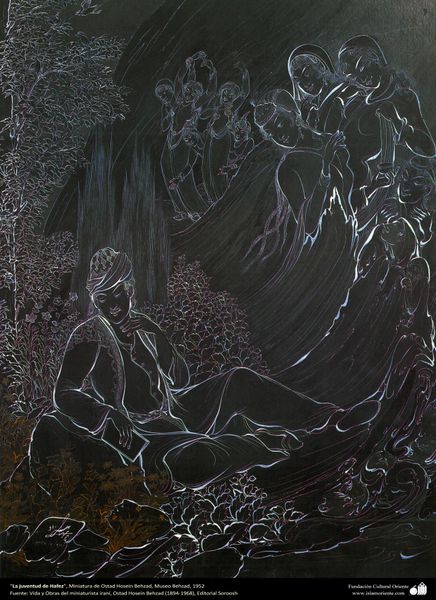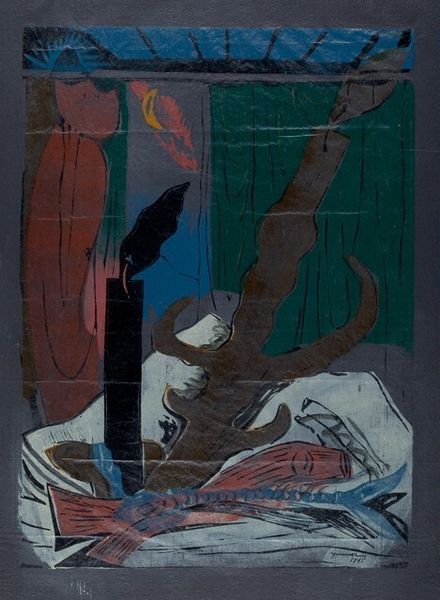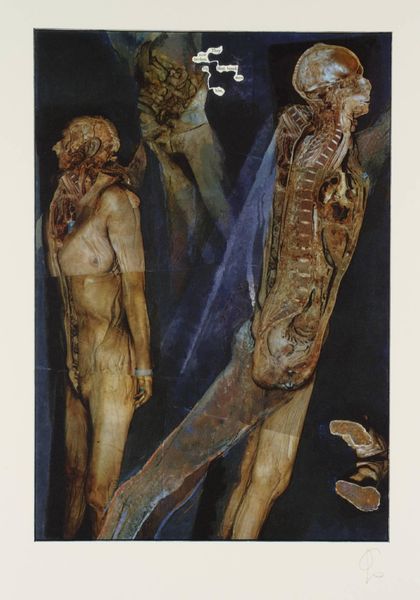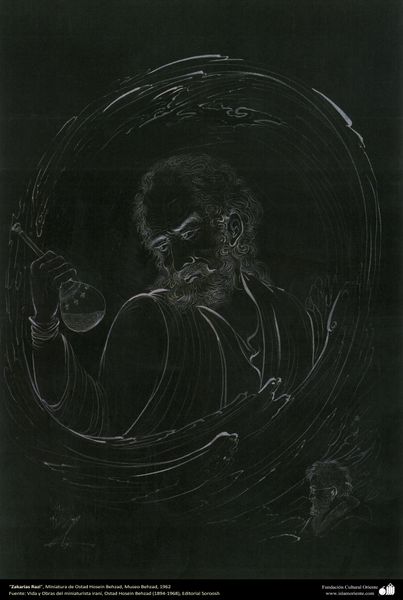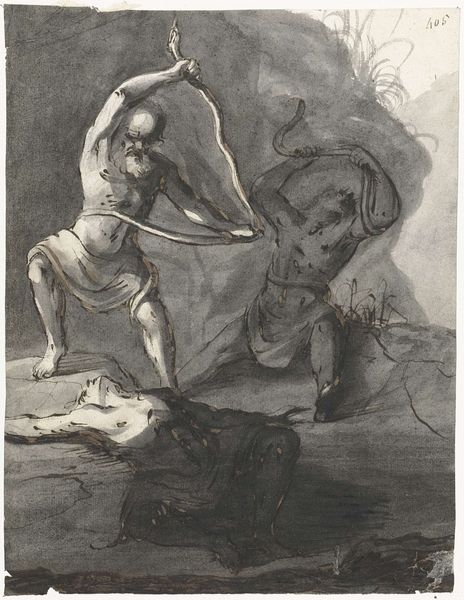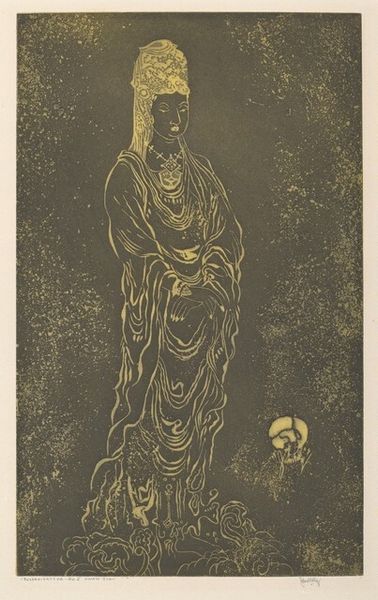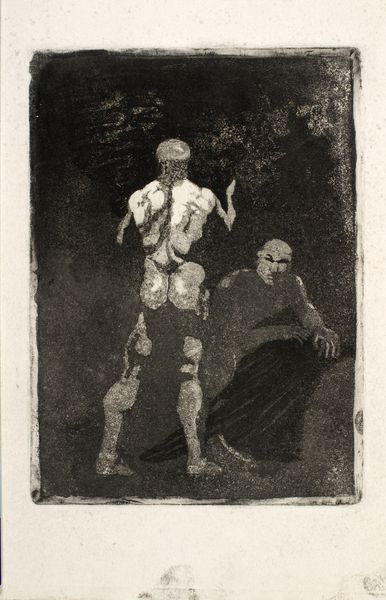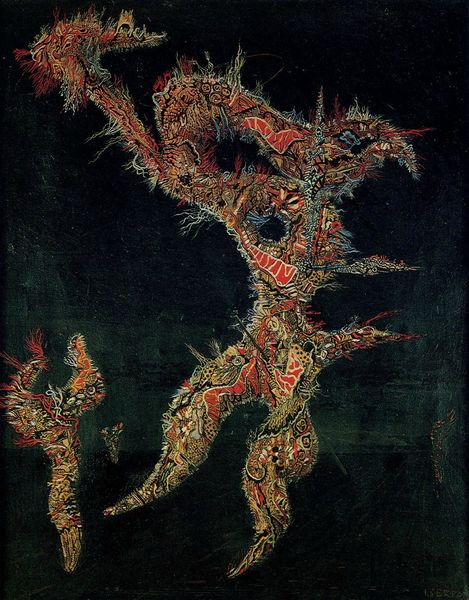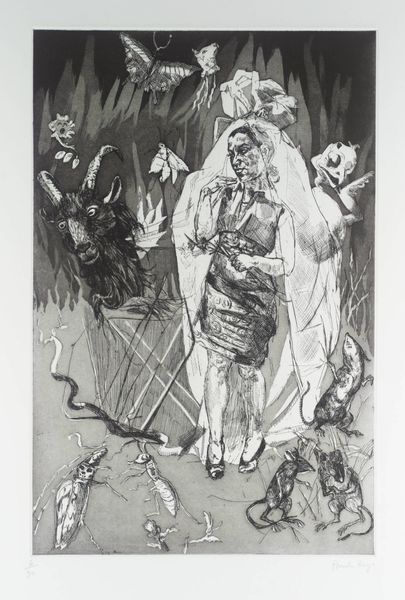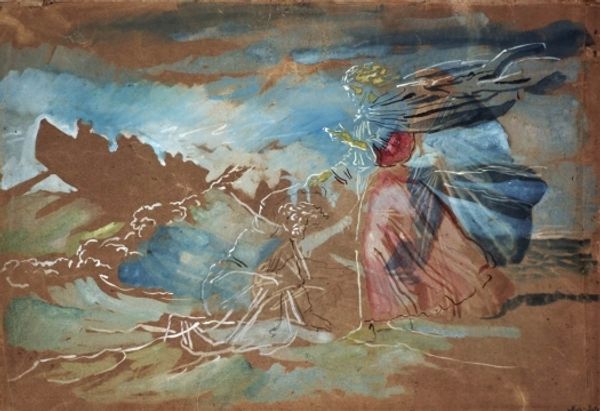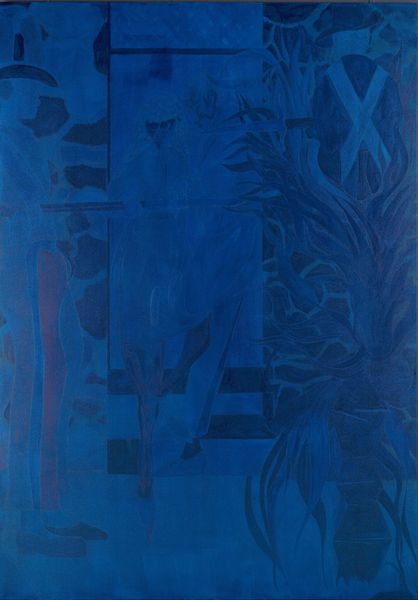
painting, ink
#
portrait
#
narrative-art
#
painting
#
ink
#
islamic-art
#
surrealist
#
surrealism
#
miniature
#
expressionist
Copyright: Hossein Behzad,Fair Use
Editor: Hossein Behzad created "This glass was a lover like me" in 1944 using ink and painting techniques. It feels like a melancholic dream, with those ghostly figures emerging from the darkness. What do you see in this piece? Curator: I see a powerful statement on the complexities of desire and loss, refracted through the lens of both personal experience and cultural constraint. It is a narrative of longing and objectification deeply entwined within the context of mid-20th century Iranian society. This portrayal prompts us to consider gender dynamics and how patriarchal structures influence artistic expression. How might Behzad be critiquing societal expectations of love and relationships here? Editor: I guess the title points to the objectification aspect. Comparing a lover to glass suggests fragility, but also disposability. Is the male figure representing societal pressures then? Curator: Precisely. He represents that silent, almost spectral force that judges and confines the woman. Note the use of negative space and how the darkness seems to engulf her. It may indicate the suffocating social atmosphere women faced. We need to analyze it as a cultural artifact embedded in layers of social and political context, reflecting the zeitgeist of its time. How does her pose and expression add another layer to our interpretation of women in Islamic art? Editor: It feels like she is caught between conforming and resisting, embodying both vulnerability and quiet strength. Thanks, understanding the cultural context has totally transformed my view. Curator: Indeed! The image is both beautiful and haunting. By examining its roots, we're able to expand our understanding of how art serves as a mirror to and a critique of society.
Comments
No comments
Be the first to comment and join the conversation on the ultimate creative platform.
